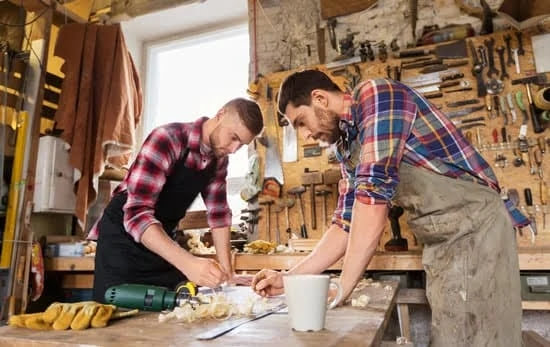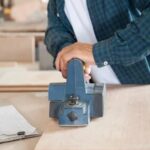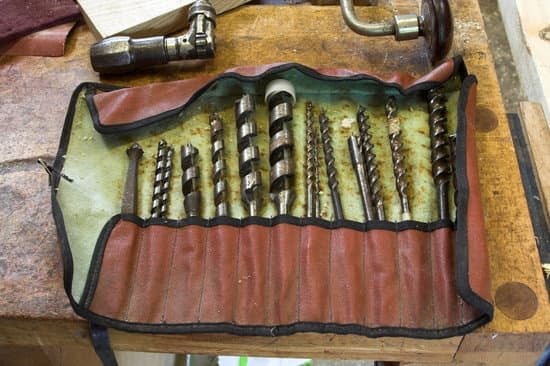Woodworking is a craft that demands precision, skill, and creativity. From crafting intricate furniture to designing unique decorative pieces, woodworking allows individuals to showcase their talent and create something truly remarkable. However, in order to truly leave your mark and make a lasting impression with your work, branding becomes an essential aspect of the woodworking process.
Branding in woodworking involves marking your creations with a unique design or logo that represents you as an artist or craftsman. This not only adds professionalism to your finished products but also helps establish your brand identity and set yourself apart in a competitive market. One effective way to achieve this is by using an electric brand.
An electric brand, also known as a branding iron, is a heated tool that allows you to burn your chosen design onto wood surfaces. This technique provides a permanent mark that can be easily recognized and admired by others.
The benefits of using an electric brand are numerous – it offers precision control over the design, creates clean and crisp marks, and ensures consistency across multiple projects. Moreover, it provides versatility in terms of design possibilities, allowing you to create intricate patterns or simple logos depending on your preferences.
In this article, we will explore how to make an electric brand specifically designed for woodworking. We will delve into the fundamentals of electric branding, guide you through the process of choosing suitable materials for your branding iron, provide tips on designing personalized brands for added uniqueness, and offer detailed instructions on constructing the branding iron itself.
Additionally, we will discuss the necessary steps involved in preparing wood for branding and different techniques for achieving desired results. Alongside these practical aspects, we will emphasize the importance of safety measures when working with electric brands and offer guidance on maintaining and caring for your tool.
By learning how to make an electric brand for woodworking, you can elevate your craftmanship to new heights and leave an indelible mark on your creations. Join us on this journey as we unlock the secrets behind creating a powerful and distinct brand in the world of woodworking.
Understanding the basics
An electric brand, also known as a branding iron or hot stamp, is a tool used in woodworking to leave a permanent mark on wooden surfaces. It consists of a heated metal plate with a custom design or logo that is pressed onto the wood to create a distinct and recognizable mark. The heat from the branding iron burns the surface of the wood, leaving behind an elegant and professional-looking design.
One key advantage of using an electric brand in woodworking is its versatility. Unlike traditional methods such as carving or engraving, which can be time-consuming and limited in terms of design options, an electric brand allows for more intricate and complex designs to be imprinted onto the wood. This makes it ideal for personalizing your projects or adding logo branding to your finished pieces.
Using an electric brand in woodworking is relatively straightforward. The first step is to heat up the branding iron until it reaches the desired temperature. This can usually be done by plugging it into an electrical outlet or using a separate heating source like a torch.
Once sufficiently heated, the branding iron is then pressed firmly against the wooden surface for a few seconds, allowing the heat to transfer from the metal plate onto the wood. As a result, a permanent mark is created that can withstand wear and tear over time.
To ensure successful branding with an electric brand, there are several factors to consider. First and foremost, it’s important to choose high-quality materials for your branding iron that will distribute heat evenly and maintain their shape over multiple uses. Additionally, proper preparation of both the wood surface and the branding iron itself is essential for achieving clean and precise results. Taking these factors into account will help you master this technique and make stunning branded creations with ease.
Below are some basics steps involved in using an electric brand:
- Prepare your working area: Ensure you have adequate space for maneuvering safely with your tools.
- Select your design: Create or choose a design that suits your branding needs. Keep in mind that intricate designs may require a larger branding iron to capture finer details.
- Set up the heating source: Depending on the specific electric brand model, either plug it into an electrical outlet or use a separate heating source like a torch to heat the branding iron.
- Heat the branding iron: Allow the branding iron to heat up until it reaches the desired temperature, following the instructions provided by the manufacturer. This is typically indicated by an LED light or other indicator on the tool.
- Position the branding iron: Place the heated branding iron in a safe and accessible location, ensuring it is stable and will not roll or fall during use.
- Branding technique: Press the hot metal plate of the electric brand firmly against the wooden surface for a few seconds, making sure to apply even pressure across all areas of the design.
- Lift and inspect: Gently lift the branding iron from the wood surface and inspect your mark. If necessary, reheat and repeat until you achieve your desired results.
Remember to work slowly and carefully, ensuring your safety at all times. With practice and attention to detail, you’ll soon become proficient in using an electric brand for woodworking projects.
Choosing the right materials
Choosing the right materials is an important step in creating an electric brand for woodworking. The materials you choose will determine the durability and effectiveness of your branding iron. Here is a step-by-step guide to help you select the appropriate materials for your electric brand:
- Determine the type of wood for the handle: The handle of your branding iron should be made from a durable and heat-resistant wood. Hardwoods such as oak, ash, or maple are excellent choices as they can withstand high temperatures without warping or cracking.
- Select the metal for the branding head: The branding head is the part of the electric brand that will come into direct contact with the wood surface. It needs to be made from a metal that conducts heat efficiently and can withstand prolonged exposure to heat. Brass and stainless steel are popular choices due to their heat conductivity and durability.
- Choose the heating element: The heating element is responsible for generating enough heat to brand the wood effectively. One option is an electrical resistance wire, which can be coiled inside a metal tube or rod to provide consistent heat distribution. Another option is a butane torch, which provides quick and intense heat but may require more frequent refueling.
- Consider additional accessories: Depending on your design preferences, you may want to consider adding accessories such as decorative caps or interchangeable heads to customize your electric brand further.
It is essential to keep in mind that while selecting materials, safety should be a top priority. Choose materials that are free from any toxins or harmful substances, as these can transfer onto the wood when branding it. Always opt for high-quality materials that will ensure longevity and reliability in your electric brand for woodworking projects.
- Determine the type of wood for the handle
- Select the metal for the branding head
- Choose the heating element
- Consider additional accessories
Designing your electric brand
Designing your electric brand plays a crucial role in creating a unique and personalized mark for your woodworking projects. This section will provide you with tips and techniques to help you design an electric brand that reflects your style and craftsmanship.
Consider Your Brand Identity
Before diving into the design process, it’s important to understand your brand identity. What message do you want to convey through your woodworking projects? Are there any specific symbols or imagery that hold meaning for you? Consider these elements as you brainstorm ideas for your electric brand design.
Sketch and Experiment
Start by sketching out various design concepts on paper. This allows you to visualize different possibilities and narrow down your options. Experiment with different shapes, fonts, and styles until you find a design that resonates with your vision.
Incorporate Personalization
To make your electric brand truly unique, incorporate personal elements into the design. This could be anything from initials or logos that represent yourself or your woodworking business. Adding personal touches not only makes the brand special but also adds a layer of authenticity to your work.
Balance Aesthetics and Functionality
While aesthetics are important, it’s equally essential to consider functionality when designing an electric branding iron. Ensure that the design is clear, readable, and easily recognizable when burned onto wood. Avoid intricate details or complex designs that may not translate well during the branding process.
Seek Inspiration
If you’re struggling to come up with ideas, seek inspiration from other woodworkers or artists who use branding in their work. Browse through online platforms, visit local galleries, or join woodworking communities where you can gather ideas and learn from others’ designs.
Remember that designing an electric brand is an artistic process that allows you to showcase your creativity within the bounds of practicality. Take your time, experiment, and iterate until you find a design that captures the essence of your woodworking projects while reflecting your personal style and brand identity.
Creating the branding iron
Construction Materials
To create your own electric brand for woodworking, you will need to construct a branding iron. The branding iron is the main component of the electric brand that will transfer your custom design onto the wood surface. Here are the materials you will need:
- Metal rod or bar: Select a metal rod or bar that is sturdy and can withstand high temperatures. Popular choices include steel, stainless steel, and brass. The size and thickness of the rod or bar depend on the desired dimensions of your branding iron.
- Insulated handle: Choose an insulated handle that can safely be held while applying pressure to the branding iron. Look for heat-resistant handles made from materials like wood or rubber.
- Heating element: This is what makes your branding iron hot enough to transfer the design onto wood. There are different heating options available, such as electric heating elements or butane torches.
- Design template: Create a design template that represents your brand or logo. This can be drawn by hand or designed digitally using graphic software. Ensure that your design is proportionate and suitable for branding purposes.
Building Process
Once you have gathered all the necessary materials, follow these step-by-step instructions to construct your branding iron:
- Measure and cut the metal rod: Use a ruler or measuring tape to determine the desired length of your branding iron’s handle portion and mark it on the metal rod/bar with a permanent marker. With a cutting tool, carefully cut through the rod/bar at this marked point.
- Shape and bend the metal rod: If you prefer a traditional straight-shaped branding iron, skip this step. Otherwise, use heat-resistant gloves and vice grips to bend and shape the metal rod into your desired form. Be cautious not to deform or weaken it during this process.
- Attach the handle: Securely fasten an insulated handle onto one end of the metal rod using screws or bolts, depending on your chosen handle configuration. Make sure the handle is attached firmly and will not come loose during use.
- Connect the heating element: Depending on your heating element choice, follow the manufacturer’s instructions to integrate it into your branding iron securely. This may involve drilling holes, attaching wires, or fitting the element into a designated area.
Remember to exercise caution throughout the construction process, as you will be working with high temperatures and potentially sharp tools. Once your branding iron is complete, you can move on to preparing the wood and start applying your custom designs in woodworking projects.
Preparing the wood
Preparing the wood for branding with an electric brand is an important step to ensure that the desired results are achieved. This section will explore the necessary steps and techniques involved in preparing the wood before using the electric brand.
- Choose the right type of wood: Different types of wood react differently to being branded. It is important to choose a hardwood with a tight grain, such as oak or maple, for best results. Softwoods like pine tend to burn unevenly and may not produce clean and crisp brands.
- Smooth the surface: Before branding, it is essential to have a smooth and even surface on the wood. Use sandpaper or a wood planer to remove any rough spots or imperfections. This will result in a cleaner and more professional-looking brand.
- Moisture content: Wood should have an appropriate moisture content before branding. If the wood is too wet, it can cause steam and make it difficult for the brand to leave a clean mark. Conversely, if the wood is too dry, it may burn too quickly or produce shallow brands. The ideal moisture content for most woodworking projects is around 6-8%.
- Apply a finish (optional): Applying a finish to the wood before branding can enhance its appearance and protect it from damage. However, it is important to choose a finish that is compatible with branding, such as oils or shellac. Avoid using finishes that contain chemicals that can release toxic fumes when burned.
Once these steps have been completed, you can proceed with branding using your electric brand according to your desired design and technique.
| Wood Preparation Steps |
|---|
| 1. Choose the right type of wood |
| 2. Smooth the surface |
| 3. Check moisture content |
| 4. Apply a finish (optional) |
Branding techniques
When it comes to woodworking, the use of an electric brand can add a unique and personal touch to your projects. The branding techniques you choose to employ can greatly impact the final result and the satisfaction you derive from your work. In this section, we will explore different approaches to using the electric brand for woodworking and how they can help you achieve your desired results.
Traditional Branding
One popular approach to using an electric brand for woodworking is traditional branding. This technique involves using the branding iron to create traditional designs or patterns on the wood. These designs can be anything from simple lines and shapes to intricate motifs or even custom logos. Traditional branding adds a classic touch to your woodwork, giving it a timeless appeal.
To achieve optimal results with traditional branding, it is important to ensure that the electric brand is heated to the correct temperature. Additionally, taking your time and applying consistent pressure when branding the wood will help create clean and crisp marks. Experimenting with different types of woods and adjusting the speed at which you move the iron over the surface can also yield varying results.
Freehand Branding
For those looking for a more artistic approach, freehand branding offers endless possibilities. This technique allows you to let your creativity flow freely as you use the electric brand to create unique designs without any predefined templates or stencils. Freehand branding gives each piece of woodwork its own distinctive character.
When employing freehand branding, it is essential to practice beforehand on scrap pieces of wood until you feel comfortable enough with your skills. Sketching out potential designs on paper before transferring them onto wood can be helpful in planning out your markings. Remember that mistakes are part of the creative process, so embrace them as opportunities for growth and experimentation.
Combination Branding
Combination branding refers to incorporating both traditional and freehand techniques to create visually striking designs on the wood. With this approach, you can add a touch of uniqueness by combining predetermined patterns with personalized elements. For example, you can use a traditional pattern as the base and then add freehand details or initials to make it your own.
The key to successful combination branding lies in finding the right balance between traditional and freehand techniques. You can experiment with different compositions and placements of your freehand elements to create aesthetically pleasing results. Don’t be afraid to mix styles and experiment until you find a combination that speaks to your artistic vision.
Safety measures
When working with an electric brand in woodworking, it is important to prioritize safety to prevent accidents and injuries. Here are some essential safety precautions to keep in mind:
- Personal protective equipment (PPE): Always wear the appropriate PPE when using an electric brand. This includes safety goggles or glasses to protect your eyes from sparks and flying debris, heat-resistant gloves to shield your hands from burns, and a long-sleeved shirt or apron to protect your skin from accidental contact with the hot branding iron.
- Proper ventilation: Ensure that you are working in a well-ventilated area to prevent the buildup of fumes and smoke generated by the branding process. If you are working indoors, consider using a fan or opening windows and doors to improve air circulation.
- Heat management: The branding iron can reach extremely high temperatures, so it is crucial to handle it with care. Keep a fire extinguisher nearby as a precautionary measure and use heat-resistant surfaces such as ceramic tiles or metal plates for placing the hot branding iron when not in use.
- Workspace organization: Keep your workspace organized and free of clutter to minimize the risk of tripping or knocking over flammable materials. Make sure there is enough space around you and maintain a safe distance between other people or objects while using the electric brand.
- Electrical safety: Ensure that the electrical connections of your electric brand are secure and not damaged. Avoid operating the tool near water sources or wet surfaces, and unplug it when not in use. Additionally, never leave the electric brand unattended while it is plugged in.
By following these essential safety measures, you can enjoy peace of mind while using an electric brand for woodworking projects. Remember, accidents can happen even with proper precautions, so always be vigilant and cautious throughout the entire branding process.
Maintaining and caring for your electric brand
Maintaining and caring for your electric brand is crucial to ensure its longevity and optimal performance. Here are some essential tips on how to clean, store, and prolong the lifespan of your electric brand.
Cleaning your electric brand regularly is essential to remove any buildup or residue that may affect its performance. One effective way to clean it is by gently wiping the branding iron with a soft cloth dipped in a mild solvent or rubbing alcohol. Be sure to avoid using abrasive materials or harsh chemicals as they can damage the branding iron’s surface.
When storing your electric brand, it is important to keep it in a cool and dry place. Moisture can cause rusting and other forms of damage to the branding iron. Additionally, make sure to store it in a protective case or wrap it in a soft cloth to prevent scratches or dents during storage.
To prolong the lifespan of your electric brand, it is crucial to follow the manufacturer’s instructions for usage and maintenance. Avoid excessive heating as this can lead to warping or distortion of the branding iron. Additionally, do not apply excessive pressure while using it on wood surfaces as this can reduce its lifespan.
Regularly inspect your electric brand for any signs of wear or damage. If you notice any cracks, loose parts, or signs of deterioration, it is important to replace them immediately to prevent further damage or injury.
By following these tips on cleaning, storing, and maintaining your electric brand, you can ensure that it remains in optimal condition for years to come. Taking good care of your electric brand will not only extend its lifespan but also contribute to achieving high-quality branding results in your woodworking projects.
Conclusion
In conclusion, using an electric brand in your woodworking projects can bring a great sense of satisfaction and add significant value to your creations. By taking the time to understand the basics and choosing the right materials, you can create a unique and personalized design for your electric brand. Constructing the branding iron itself requires careful attention and following detailed instructions.
Once you have created your electric brand, it is important to properly prepare the wood before branding. This involves ensuring that the surface is clean and free from debris, as well as considering factors such as moisture content. Using different branding techniques can also help you achieve the desired results in your woodworking projects.
Safety should always be a top priority when working with an electric brand. Taking essential safety precautions such as wearing protective gear, working in a well-ventilated area, and keeping flammable materials away from the heat source will help prevent accidents or injuries.
Lastly, maintaining and caring for your electric brand will ensure its longevity. Cleaning it regularly and storing it properly will keep it in optimal condition for future use. By following these steps, you can continue to enjoy the satisfaction of adding your personalized mark to each woodworking project while increasing their overall value.
Using an electric brand allows you to leave a lasting impression on your woodworking creations. Whether you are branding furniture pieces or smaller wooden items, this technique adds a touch of professionalism and uniqueness that sets them apart from others. Embrace the process of making an electric brand for woodworking and enjoy the many benefits it brings to both your craftmanship skills and final products.
Frequently Asked Questions
How do you make a custom branding iron for wood?
Making a custom branding iron for wood involves a few steps. Firstly, you’ll need to design your desired logo or text that you want to appear on the wood surface. Then, the design needs to be converted into a vector format and scaled appropriately.
Once you have the design ready, it can be sent to a specialist who can create the branding iron using materials like steel or brass. The branding iron is typically made by cutting out the design using laser technology or by machining it. Finally, the branding iron is attached to a handle for ease of use, and it’s ready to be heated and applied onto wood surfaces.
How do you brand woodworking?
Branding woodworking is an effective way to add personalized touches and leave lasting impressions on your crafted pieces. To brand woodworking, you’ll need a heating tool like a branding iron that bears your chosen logo or symbol. Before branding, ensure that your woodworking project is finished and sanded smooth.
Heat up the branding iron until it reaches the desired temperature recommended for your specific type of wood. Press the hot branding iron firmly onto the wood surface for a few seconds without moving it around too much. Afterward, lift the branding iron carefully and allow the wood to cool down before handling it further.
How do you use an electric branding iron for wood?
Using an electric branding iron for wood requires caution and precision. Start by choosing an electric branding iron with the appropriate size and design you desire for your wooden projects. Ensure that any protective covers on the heating plate are removed before usage; these are usually meant to keep them safe during transportation or storage.

Hi everyone! I’m a woodworker and blogger, and this is my woodworking blog. In my blog, I share tips and tricks for woodworkers of all skill levels, as well as project ideas that you can try yourself.





